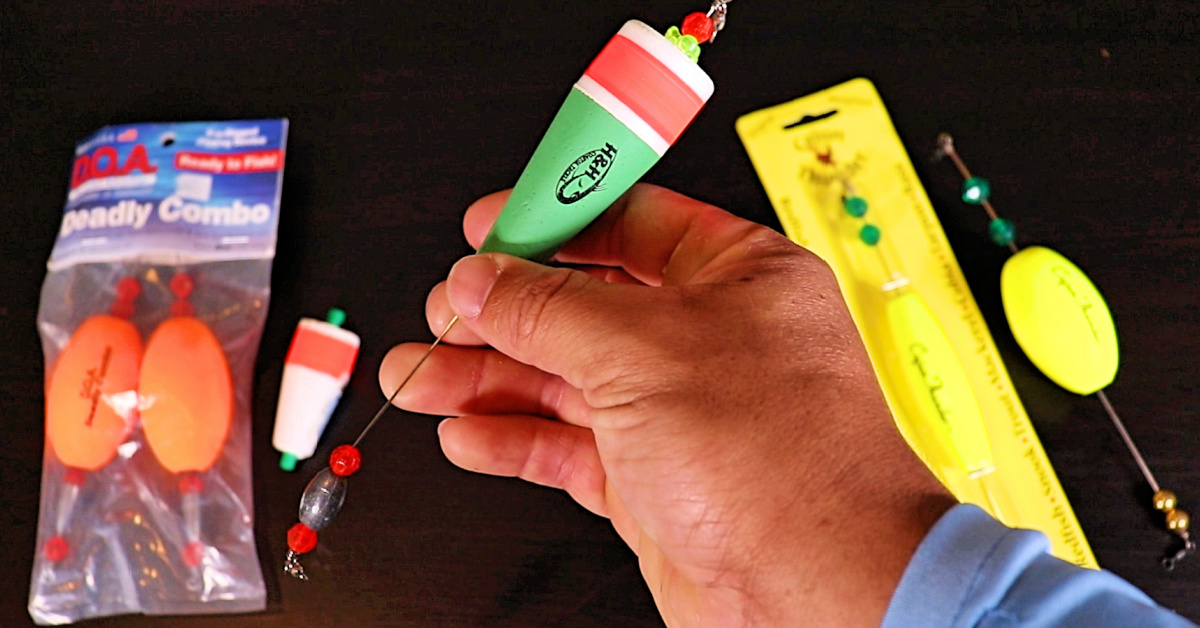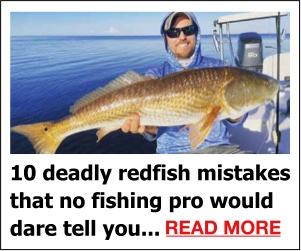This Is Why You Shouldn’t Use Popping Corks For Inshore Fishing
- By: Tony Acevedo
- on
- Found In: *Tackle & Gear, Fishing Tips, Weekly Newsletter: 9-5-21

Popping corks can be awesome…
They are great in dirty water or coastal marsh areas where you need to bring a lot of attention to your lure to get a strike.
But in many scenarios, they are probably decreasing your chances of catching fish!
In this new video, you’ll learn why and when you shouldn’t use a popping cork.
Check it out below!
Why You Shouldn’t Use Popping Corks [VIDEO]

To put it simply, you can’t control the depth of your lure while you’re retrieving your lure with a popping cork.
If you’re fishing a flat and you retrieve over a pothole or dropoff, the lure is not going to be close to the bottom (where you need to be).
By using a paddletail on a jighead, you can actually allow your lure to sink down into the strike zone.
Areas that I like to target fish are dropoffs because those depth changes are typically where fish are holding.
And the presentation of your lure is key in these areas!
I like to work the lure up or down the gradual slope for a reaction strike.
A popping cork just doesn’t allow you to work those different depths.
Also, popping corks aren’t going to excel in super clean water on a bright sunny day.
They make a lot of noise and splash to draw in fish but on these days, you need more of a subtle finesse presentation.
And if you’re sight casting to fish in shallow water, those fish are already on edge and more finicky because they aren’t as protected.
Have any questions about where you should and shouldn’t use a popping cork to catch inshore fish?
Let me know down in the comments!
And if you know someone who is tired of getting skunked using popping corks, please TAG or SHARE this with them!
P.S. Want access to our best fishing spots and tips, plus discounts to our online tackle store? Click here to join us in the Insider Club!
Related articles:
Related categories:
STOP WASTING TIME ON THE WATER!
Do what the “SMART ANGLERS” are doing and join the Insider Club.
Here’s what you’ll receive today when you join:
- Weekly fishing reports and TRENDS revealing exactly where you should fish every trip
- Weekly “spot dissection” videos that walk you through all the best spots in your area
- Exclusive fishing tips from the PROS you can’t find anywhere else
- Everything you need to start catching fish more consistently (regardless if you fish out of a boat, kayak, or land).










Thanks, makes sense.
You need to check out Harper’s popping cork. It’s depth is quickly adjusted by sliding a stop up or down your line.
No sound
wayne edwards. i agree with a lot of what you said above. i fish in louisiana now. there are days that the cork is the only way they will bite plastics, and there are days when it is a tightline day. we use two different corks, oval and the ones with a scoop mouthl for different conditions. in the winter the water clarity is very good so in shallow water the oval is better because it isn”t as loud. we also have to use a longer flouro leader.
so in my experience there is no hard and fast rules on when to or not to use a popping cork. i am 82 in age and have caught a few thousand specks. my experience is that they are like women, unpredictable.
so when we go fishing one os us throws a cork, one a tighline and if there is a third, he uses live bait. when we find out what the fish want that day we all switch.
regards wayne
Hi guys I am in Mn we have great fishing. But speaking salt only, I have used them on flats only where the water is shallow . I make my own so I can adjust the size. At home not so much because of water depth changes so much .I like the jig head with or with out lips and also large chatter type blades in front . Tight lines Guys Johnnie Pike.
Good stuff John!
I completely disagree with the title. I do agree with some of the reasons, but the cork works great fishing in the grassy flats for trout. The cork also works well with live pin fish and over oyster bar specially when the tide is moving fast.
Thank you for the feedback Nelson!
Still not sure what the buzz is about the title. Its “Why You Shouldn’t Use a Popping Cork Inshore” and not “Why You Should Never Use a Popping Cork Inshore”. I give thew reason why and also follow up with when you should.
Good info. on when not to use a poppong cork Tony.
Thank you Mel!
I believe this is a classic, or new classic, internet age tactic of utilizing a controversial subject line to attract interest in an article (aka Click Bait). The problem with CLick Bait articles is that the challenge to one’s conviction causes some to not read or listen through the article to see that the subject line likely doesn’t; support the overall premise of the article. Regardless, I don’t believe it was done to be controversial, but it did garner the buzz it was intended to. Note the number of comments. I agree that Tony was merely stating that popping corks have their time and place. I use them frequently when the water is dirtier to attract fish. Hell, I hooked a big Tarpon once with a cork while going to town on trout. Of course, that fight didn’t last long but proves that corks work at the right time and place.
Thank you for the feedback Luis!
Just go to show how caught up people get with headlines and titles, rather than focusing on the main content on the article.
Now if this was titled “why you should never use popping corks inshore” that would be different.
If you want to use a popping cork it’s better not to use one of those manufactured ones with all the hardware. Use one of those cheap weighted popping corks without the hardware and you can change the depth. there is a video , I think, on the SS site
For sure! When I do use corks I only use the stand-alone foam corks that can easily be taken off if needed. Not to say the other ones don’t work. I’ve seen plenty of fish caught on them but there is also the issue of having to re-tie your leader to adjust for depth. With a slip float all you have to do is slide it up or down.
I look forward to all your great tips. The tip about using plastic zip ties to remove a stuck anchor really worked. A big thank you.
Thank you for the great feedback Gene!